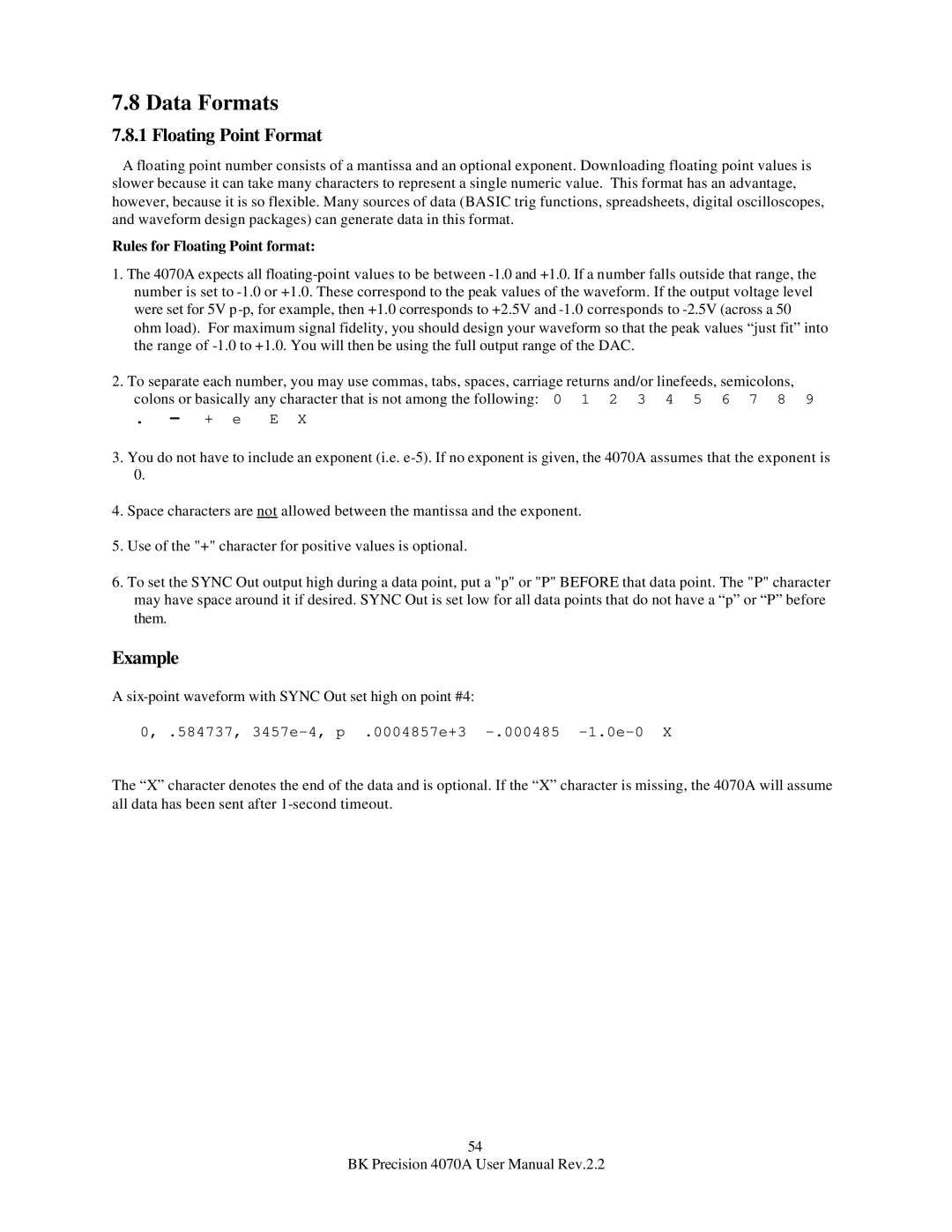7.8 Data Formats
7.8.1 Floating Point Format
A floating point number consists of a mantissa and an optional exponent. Downloading floating point values is slower because it can take many characters to represent a single numeric value. This format has an advantage, however, because it is so flexible. Many sources of data (BASIC trig functions, spreadsheets, digital oscilloscopes, and waveform design packages) can generate data in this format.
Rules for Floating Point format:
1.The 4070A expects all
2.To separate each number, you may use commas, tabs, spaces, carriage returns and/or linefeeds, semicolons,
colons or basically any character that is not among the following: 0 1 2 3 4 5 6 7 8 9
. - + e E X
3.You do not have to include an exponent (i.e.
4.Space characters are not allowed between the mantissa and the exponent.
5.Use of the "+" character for positive values is optional.
6.To set the SYNC Out output high during a data point, put a "p" or "P" BEFORE that data point. The "P" character may have space around it if desired. SYNC Out is set low for all data points that do not have a “p” or “P” before them.
Example
A
0, .584737,
The “X” character denotes the end of the data and is optional. If the “X” character is missing, the 4070A will assume all data has been sent after
54
BK Precision 4070A User Manual Rev.2.2
